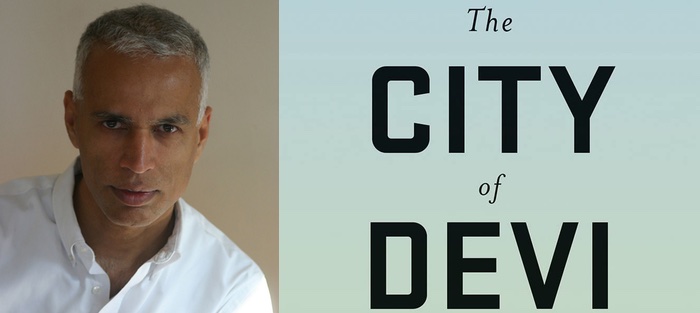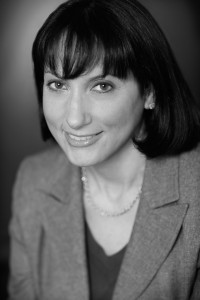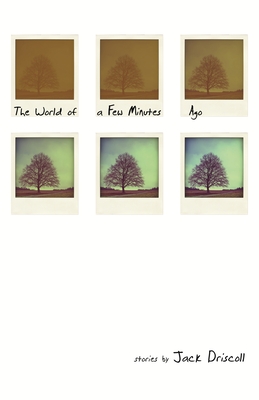Editor’s Note: For the first several months of 2022, we’ll be celebrating some of our favorite work from the last fourteen years in a series of “From the Archives” posts.
In today’s feature, Nawaaz Amhed interviews Manil Suri about the completion of his impressive trilogy. The interview was originally published on October 7, 2013. Ahmed’s debut novel, Radiant Fugitives, was published last year.
Upon learning that I’m working on my first novel, Manil Suri offered me the luck that Pulitzer Prize-winner Michael Cunningham had once wished him for his first book, begun when Suri still considered himself a mathematician who only dabbled in writing. After a decade of informal writing groups, Suri had decided to enroll in workshops with luminaries such as Jane Bradley and Vikram Chandra, culminating in the workshop with Cunningham, who told him, “You’re a writer. You have to finish this [book] at any cost.” Suri finished the book, The Death of Vishnu (W. W. Norton & Company, 2001), and it was published to enthusiastic acclaim. His two subsequent novels, The Age of Shiva (W. W. Norton & Company, 2008) and The City of Devi (W. W. Norton & Company, 2013), completed the trilogy.
As a writer, I’m envious of the range of the prose in these three novels—from the understated to the extravagantly lyrical, from the playful and ironic to the intense and emotional. But what impresses me most is the books’ ambition: they encompass history, mythology, the human heart and its desires, gender and sexuality, politics, and religion. Though not especially long, these are big books. With each novel, Suri seems to be getting ever more ambitious, confronting almost impossible challenges: in The City of Devi, he imagines a post-apocalyptic India in throes of a nuclear attack by Pakistan, a Mumbai riven by Hindu-Muslim clashes, and the appearance of the reigning deity of Mumbai, Devi, as the Bollywood incarnation Super-Devi. There are elephants rides, glow-in-the-dark saris, and even laser fights.
In a refreshingly candid interview, Suri talked to me about the process of crafting these inventive and far-reaching novels, from his initial inspirations and struggles with inevitable obstacles in plot, character, and theme to the finished novels, which hide, of course, all the messiness of writerly process. Suri was as generous sharing his insights as he was in sharing the luck that started his career.
Interview:
Nawaaz Amhed: How did you manage the process of writing the first book?
Manil Suri: I needed to find time away from my mathematical career. I had all these research projects and I had to somehow balance them with writing. I managed to get invited to a month-long residency at the Virginia Center for the Creative Arts. I’d taken two years to write six or seven chapters, and there, in a little over three weeks, I wrote about the same amount. I didn’t bring any math books. When I finished with the residency, it was looking like a book—not a good one, it had many holes, but one which I didn’t have before.
The next year, I got another residency, and while I was there I was able to fill the holes I’d skipped over to get to the end. I also met someone there who knew all the agents there in New York, and he said he knew the perfect person for the book, for I’d read out something from it. He put me in touch with my agent.
The first correspondence I had with her, she sent me this very ambivalent note saying that the book had many good things, but the ideas overtook the narrative. I thought she just didn’t like it, but she did like it, and she wanted me to do another draft to go over it again. So that’s what I did, with the single thought of toning down the ideas and having the narrative come up more. That’s always a good thing I think; you don’t want the ideas—the framework, the structure that lies under the narrative—to be too much in the forefront, you want to tuck it in so it’s not too obvious. I had all these ideas about reincarnation and about my book being a microcosm of India. There were lots of places where I was too invested in my ideas, and I was trying to explain them with an additional sentence here or there, which needed to be taken out, to let the actions speak for themselves.
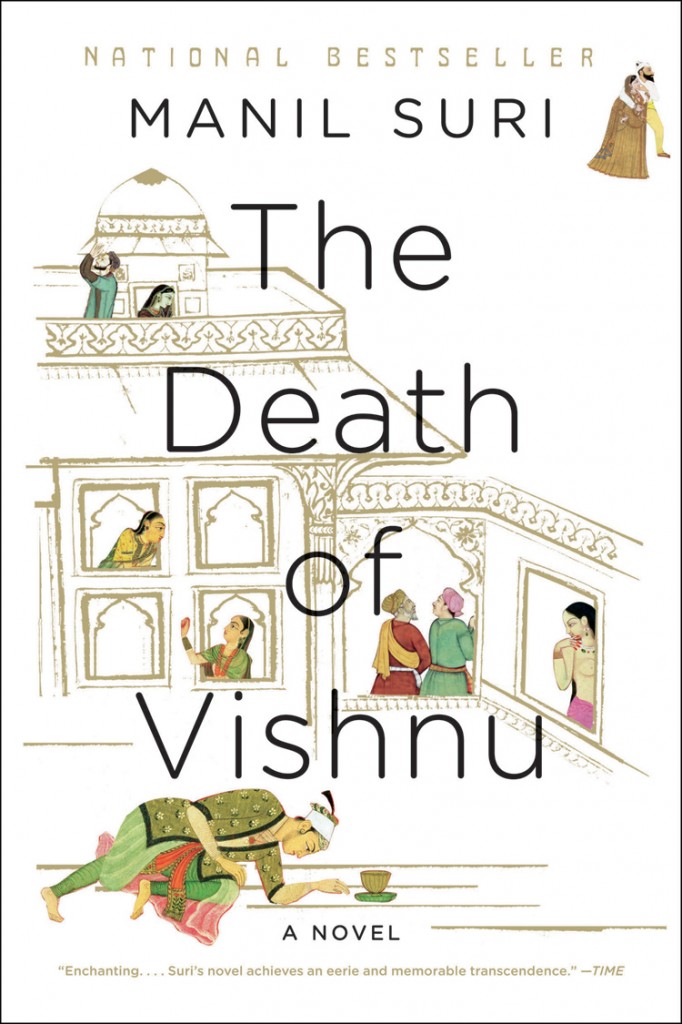 Is it fair to say that in contrast it with your latest book, the structure and the nature of your first book remained pretty much the same from the first draft to your last?
Is it fair to say that in contrast it with your latest book, the structure and the nature of your first book remained pretty much the same from the first draft to your last?
The action was pretty much the same. That’s been true of all the books. It’s more so now. By the time I actually show it to anyone, I have worked through the characters and the actions and the scenes. I try not to anticipate too many changes. In the second book, The Age of Shiva, I did change the ending. In a previous incarnation, it was much more bleak: Meera, the mother, has invested all her chances of happiness in her son, almost like a romantic attachment, and it ended on this ambiguous note where’s she’s stuck. But in the version that I finally did, she comes out of it.
Why did you feel you needed to change the ending? Was the ending you originally had not satisfying to you?
The biggest problem with the second book was how to make Meera sympathetic, to allow readers to identify with her in some sense. I think I succeeded with Indian audiences. In India (and, incidentally, France), people were saying at readings that they understand perfectly what Meera went through. There is this attraction in South Asia for male children that mothers have. And one of my interviewers in France said, “I am Meera,” which was amazing. But many American readers found Meera completely unsympathetic. Several of them said they were disappointed when she didn’t kill herself—that’s the level of anger they had for her.
That was an awakening: I always thought she was a very sympathetic character, but women especially did not. They thought she made too many bad decisions, that she was self-destructive. They wanted a heroine that could overcome all odds and have this rousing climax where she emerges as a person to be emulated, and that is exactly what I didn’t want to do.
There were other tropes suggested to me. At one point, my editor suggested that Meera kill herself and end the book there. That she walks into the water and that’s it. She said that would be sure to get people’s sympathy. It was a real puzzle what to do with Meera. At some point, you have to be true to the vision that you have for a character. There was this gap between what I thought and what people from different cultures thought. There’s a cultural background to the way we read a book.
So as a writer, what do you do? Do you have a specific audience you write for?
That’s the hard part. As a writer you have to be true to yourself. I asked Michael Cunningham about this, and he said that when people say they can’t sympathize with a character what that usually means is that they haven’t understood the character’s motives. I had to stick with my vision of her. What I could do, and still keep my integrity as a writer, was to clarify her motives, and hope that people relate. And if they don’t, you can’t help that.
I know that your latest novel, The City of Devi, has gone through some radical changes from how you first envisioned it. Could you speak a little bit about that process?
The City of Devi was actually supposed to be part of the second novel, The Age of Shiva. It was one huge combined narrative where Ashwin, the son in the second novel, grows up and becomes Karun, the central protagonist in the third novel.
This part just didn’t gel with the first part. For one thing, the tone was completely different. For another, it was a question of practicality in terms of the years. Ashwin was already fifteen or sixteen in 1980, and by the year 2000 he would be the wrong age and it wouldn’t work. That’s really me as a writer being very slow; I couldn’t keep up with my characters. Also, the first book felt really whole by itself and didn’t need this.
When I finally broke off from that first book, it became a completely separate narrative. Originally Jaz [Karun’s lover] was a student in the US, and when I showed that part to my agent she felt that it didn’t gel with the India part. It felt like two novellas—one in the US, one in India. So I decided to scrap 150 pages or so which I had written about Jaz. She was actually shocked by that, and she tried to take her critique back, but I said I’m just going to start again. And that was good because I was writing a completely different book.
Sarita [Karun’s wife] was a serious character, and as I was pondering the possibility of nuclear war, it was necessary to make things absurd to balance the harshness of that idea with something that was more fun. I didn’t want this to be a grim tome about nuclear war, it was about a love triangle, so that’s where Jaz came in: once I got the idea that he was going to be a very exuberant and irreverent character, he was perfect for balancing all the other elements of the book.
As for Brahma, and the Vishnu/Shiva/Brahma trinity that I wanted to write a trilogy about? Do I really twist the story to somehow introduce creation with Brahma into this book, or do I modify the trinity with Devi? It turned out to make so much more sense to use the mother goddess with the trinity. Historically, she has been much more prevalent in Hinduism than Brahma, much more worshipped, and representing Mumbai, she makes a lot more sense [as Mumba Devi]. I decided Brahma is out and Devi is in. And after that I got the whole idea of tying it to Bollywood, Superdevi, and making that part of the action.
The reason I took so long writing this book is that things kept changing. One of the jokes I make is that I’m at the end, editing, and what do you know, the Arab Spring happens! How inconsiderate of those people! I think I’ve finished this book, and now I have to adapt to that development as well. That’s one of the challenges about writing something that’s set in the future. Even though I didn’t put in any dates, I still had to make sure that it would work on an ongoing basis. People shouldn’t turn around tomorrow and say, Hey, nothing you said came true. It should give the impression that it’s still possible.
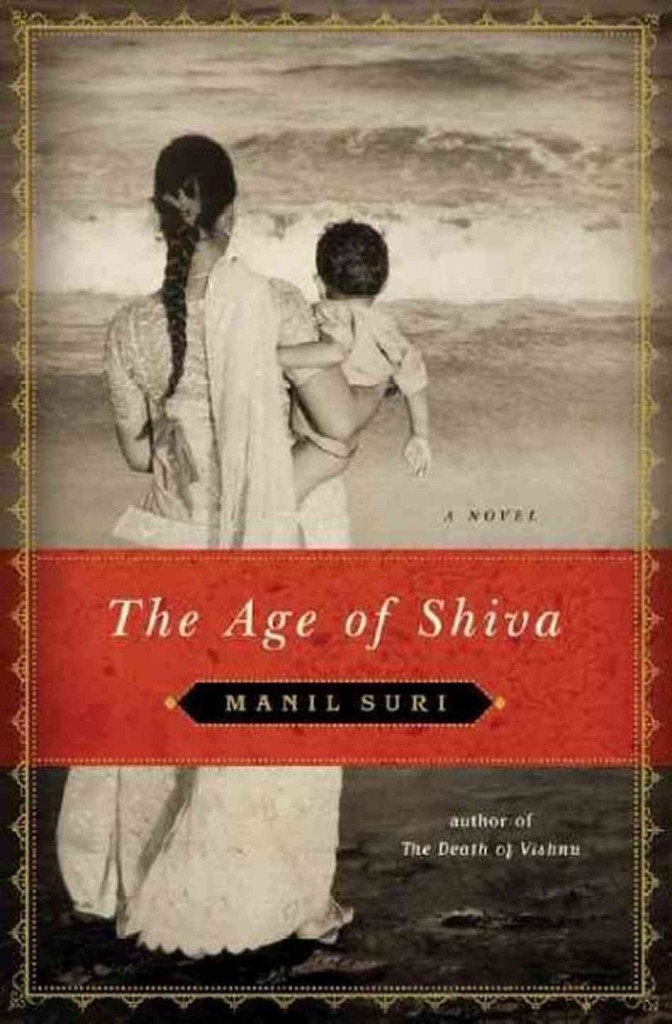 With all these changes, did you have to do a lot of rewriting with your existing pages? How did you heighten the absurdity, for example? How did you decide to work with the material you already had?
With all these changes, did you have to do a lot of rewriting with your existing pages? How did you heighten the absurdity, for example? How did you decide to work with the material you already had?
Of the Jaz parts, I used about two sentences. With the Sarita parts, there were big chunks that dropped out. But the parts from the beginning remained as they were. Some ideas didn’t work: for example, Sarita breaks her leg in the original version, and Karun’s taking care of her, and that’s how they have more intimacy–all that had to go. Once I knew Jaz a little better, I went back and had a better idea of Sarita, since I was playing these characters off each other.
The hardest part was the plot. In a literary novel, these characters would be caught up in existentialist angst about something or the other, Super Devi may simply be a symbol, and maybe they don’t even find Karun. I didn’t want that kind of a novel. I wanted them to go somewhere and find Karun, and to have all the references be more than symbols. So that was difficult, and that took me a while to sort out.
In the novel it seems that Sarita herself has less of a relationship with Karun than Jaz. She knows him for only a few months, while Jaz knows him for years. Was there anything you were trying to say by making these relationships disparate in size?
In this book, my main focus–some writers pick setting, some writers pick character, some writers pick language—my main focus was pace, and everything was subservient to that. I was almost stingy with the number of pages I devoted to actually developing character. In literary fiction the usual thing is to concentrate on characters, and spend quite a bit of time developing them, going back to their childhood, putting in scenes that establish what these characters are really about. But I couldn’t afford most of these, just because I had these stories that were proceeding on parallel tracks, in the past and in the present. If you’re worried about pacing, you have to limit the amount of words you can spend on developing characters, and so that’s done in very quick brushstrokes.
When I went back and revised, I found myself taking out descriptions; they had to be really short, and anything that lasted too long had to be trimmed. Kill your darlings, as they say.
You must have had a lot fun playing with Superdevi, James Bond, etc. How did you decide what was too much, too over the top?
I had this idea, for example, about Guddi coming on an elephant and rescuing them. I initially thought there’s no way I can do that, but later decided to try to put that scene in. Similarly, I had this idea of them having a laser fight while suspended in midair, which is completely crazy for a literary novel, but the more I thought about it, the more I felt, why not? Let’s see if I can actually work things to get to that point, if I can prepare the reader to go along on this journey, and have enough signals so these can be taken in the proper spirit. So I set down a path to be able to include those things.
One of the key events in the book is where the train runs off the tracks, which comes a little before, and that’s where I’m announcing the way that I will write this story, breaking through any kind of preconceived notions about literary fiction. And I’m announcing to the reader you need to come along with me as this train goes off the track: everything is possible now; you need to trust me.
In The City of Devi, and to a certain extent in Age of Shiva, you have national events that happen around the main characters. Jaz and Sarita are so focused on the search of Karun while all these crazy things are happening around them that they are not really involved emotionally in the apocalypse. In The Age of Shiva, you have the history of India unfold, but Meera herself is so focused on the son that these things are in the background. There’s a definite choice you’re making here, to keep the historical events from impacting your characters too much. Why that particular decision?
Meera is very much affected by the way the country is progressing: there’s the partition that brings her to India, there’s a war that kills her husband. It’s like saying that history will actually shape your life, even if you are completely passive to it, as Meera is. In The City of Devi, the reason Karun is missing has to do with the war. I’m trying to focus on how we might behave when there is upheaval happening around us. We still concentrate on things that affect us directly or emotionally.
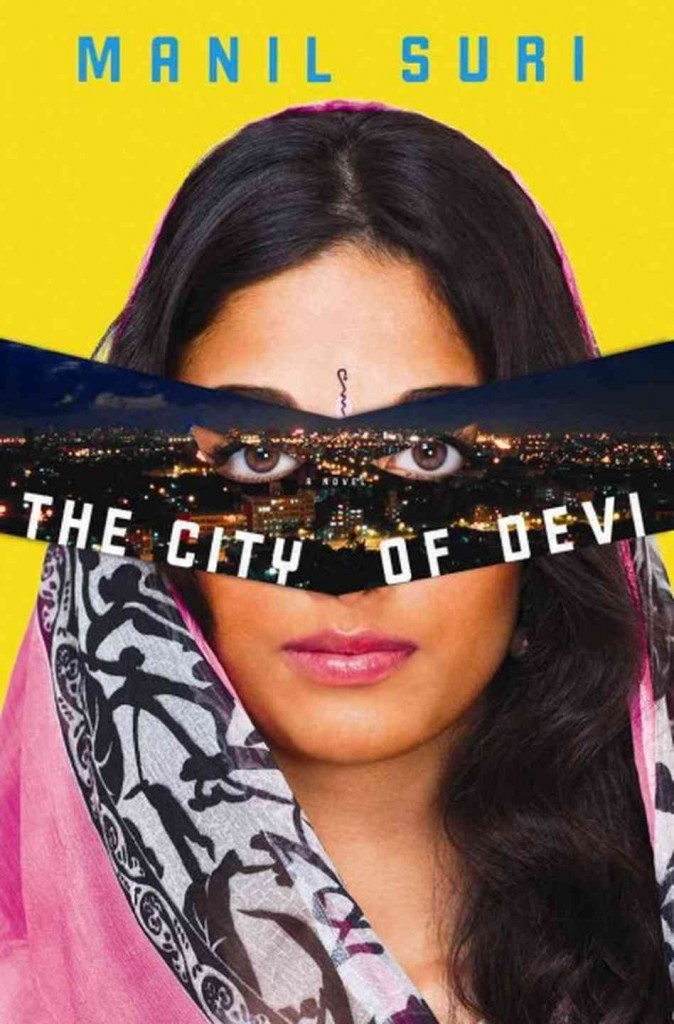 The last question I had about the book is about the ending. It seems like we could have had the three of them together at the end. But you chose not to.
The last question I had about the book is about the ending. It seems like we could have had the three of them together at the end. But you chose not to.
One of the things that came up in this book is the idea of a triad, this motif that kept recurring. I was interested in Sarita, Jaz, and Karun combining in one, just like Vishnu, Shiva, and Devi might combine. And they are combining in an act of creation. Also, I found the recurring motif of the trio very fluid because Karun also has this triangle with his parents, and obviously Jaz and he and Sarita have a triangle. The question is how does this triangle evolve? The ending was a way to show that these triangles can come and go, that they float through time and space, they sort of regenerate themselves, that they can die and be born. That was the main reason behind that choice.
Do you have any advice to writers starting out?
I was very fortunate to not worry about publication for a long time, which ensured that I was writing because I wanted to. I come from a different background, and I was writing it because it took me away from my usual activities. That’s something that could help some people.
The other thing: if you’re going to be writing a novel, you are going to be with the characters that you construct for a long time, so you better be sure that you want to spend all that time with them. It’s very easy to fall into the trap — this sounds good, let’s work on it—but you have to be really invested in your characters, given the time and energy it takes to write a novel. You have to like them even if they’re villains.
Author photo by José Villarrubia.
Further Resources:
- Read a review of The City of Devi from The A.V. Club.
- Read the Daily Beast interviews with Manil Suri.

